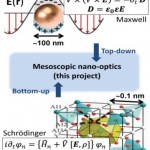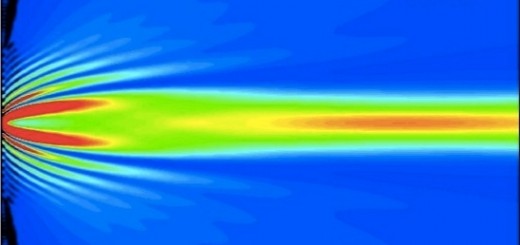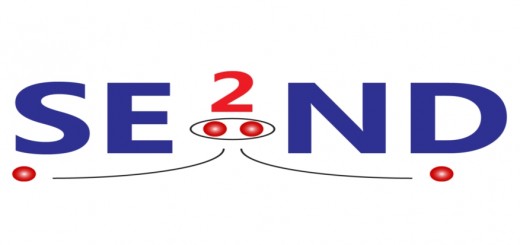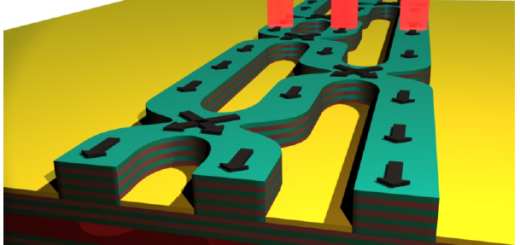MESOPLAS – FP7 Marie Curie Career Integration Grants
 Funding agency: FP7 Marie Curie Career Integration Grants
Funding agency: FP7 Marie Curie Career Integration Grants
Identifier: PCIG14-GA-2013-630996 MESOPLAS
Duration: February 2015 – January 2019
Principal Investigator: A. I. Fernandez-Dominguez
Description:
The boost experienced by nanophotonics research during the past decade has been driven by the ability of surface plasmons to collect and concentrate light into deeply sub-wavelength volumes. The hybrid nature of surface plasmons (which emerge from the coupling of photons to the collective oscillations of conduction electrons in metals) has allowed an unprecedented control of light at the nanoscale, a regime inaccessible to standard photonic technology. This scientific success has been possible due to two factors: the high precision of modern nanofabrication and characterization techniques, and the extraordinary predictive value of classical electrodynamics.
However, the miniaturization trend in experimental nano-optics is currently approaching dimensions comparable to the typical Coulomb screening length in noble metals (of the order of a few angstroms). A theoretical challenge arises in this spatial range for two reasons. On the one hand, at this sub-nanometre regime, macroscopic electromagnetism breaks down due to the emergence of quantum effects such as spatial non-locality. On the other hand, the enormous complexity of the full quantum numerical schemes available to describe the electron-ion dynamics in metals restricts their applicability to systems involving only a few hundreds of electrons.
The objective of this project is to fill the gap between Maxwell’s equations and first principle condensed matter theory methods. It aims to devise a mesoscopic platform able to treat accurately and efficiently the interaction between light and matter in nanodevices which, presenting angstrom-sized geometric features, contain millions of electrons. This is a prominent fundamental problem with significant technological implications. The further development of nanophotonic technology requires a complete and unified picture of the physical mechanisms behind its performance. The ultimate goal of this proposal is providing the theoretical framework for this purpose.



















